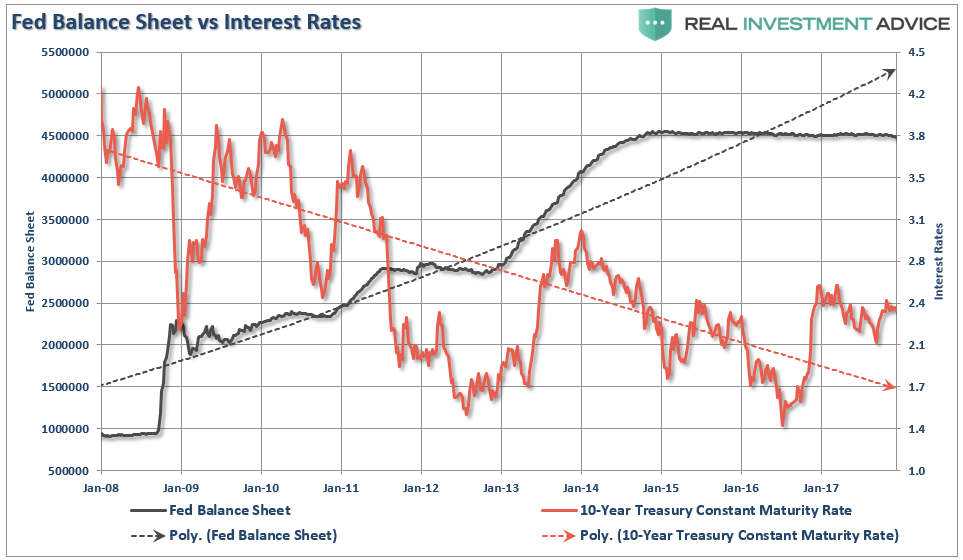
One of the biggest issues with predictions of rising 10-year bond yields since “bond bears” came out in earnest in 2013, is they have been consistently wrong. For a bit of history, you can read some of my previous posts on why rates can’t rise in the current environment.
As we head into 2018, and beyond, there are many reasons why rates will remain subdued all of which are economic and fundamental in nature. However, a recent article by Wolf Richter peaked my attention:
“The Fed’s “balance sheet normalization” will accelerate as 2018 progresses: In Q1, the Fed is scheduled to shed $60 billion in securities, in Q2 $90 billion, in Q3 $120 billion, and in Q4 $150 billion, for a total of $420 billion. This is scheduled to increase to $600 billion in 2019.
And if the Fed wants to spook the markets into jacking up long-term yields, it could accelerate further its ‘balance sheet normalization.’ For the first time in history, the Fed can actually do something that will drive up long-term yields.”
This is an interesting concept and, if Wolf is correct, would be a monumental shift in a market that is 4-times the size of the stock market.
But I am not so sure I agree.
During the Fed’s brief history with unprecedented liquidity injections into the financial markets, there have been previous occasions where the Fed’s balance sheet was reduced as shown in the chart below.

Each time, when liquidity was extracted from the financial markets, the rotations from “risk” to “safety” pushed yields lower. Not higher. The chart below is the 8-rolling average of the Fed’s balance sheet which more clearly shows the correlation.













Leave A Comment